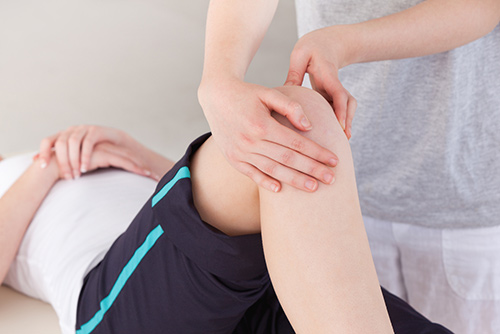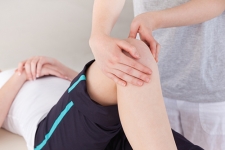
As discussed previously, some of the main goals of physical therapy are to provide a viable, conservative option to surgery; to help improve both mobility and range of motion; and, assist in helping patients manage their pain without the long-term usage of narcotic pain medication.
So, how exactly, is it that physical therapists are able to achieve – by and large – such wonderful, long-lasting results? The answer would be…through some very tried and true methods that work to target muscles in the area(s) that you feel pain, which, in turn, allows the corresponding joints to work better and have more support. These would include:
Low-impact aerobic training – These workouts will rev up your heart rate and still take it easy on your joints. For instance, you might walk on a treadmill or use a stationary bike to warm up (as opposed to running) prior to completing your strengthening exercises.
Strengthening exercises – These exercises often use resistance bands or your own body weight (think lunges, squats, and push-ups), and are designed to work on your core muscles (belly, glutes, and back), as well as other parts of your body.
Pain relief exercises – Pain relief exercises are designed to target areas where you have pain so that, in the long run, you’ll be stronger and more flexible – both of which should make it easier to live your life.
Stretching – Any stretching that your physical therapist will have you do will typically be gentle, and your therapist will keep an eye on you to ensure that you’ve warmed up and you don’t stretch too far.
Heat and ice packs – Your physical therapist may have you use ice (to help calm inflammation) or heat to help warm up your muscles so they move better.
Massage – Now, this isn’t the same as a “spa massage” but is, instead, therapeutic massage. Because therapists are working on tender areas, the massage may not feel “fantastic” BUT therapists always take great care to make sure that the treatment is both safe and helpful for you.
TENS and ultrasound – Transcutaneous electrical nerve stimulation, or TENS, uses a device to send a low-voltage electric current to the skin over the area where you have pain. Ultrasound sends sound waves to the places you have pain. Both may offer relief by blocking the pain messages sent to your brain.
Depending upon the type of exercises and stretches that your physical therapist wants you to do, they may have you work on some of these things at home, as well. But, don’t worry! If that’s the case, your physical therapy team will provide you with detailed instructions on how to perform the exercises. Above all else, it’s important to remember that, while physical therapy may not be the “most fun” thing you can do, it is one of the best choices you can make when deciding on how to recover after an injury or how to manage long-term (chronic) pain. Physical therapy not only makes you stronger, but it also helps you move and feel better.
source: moveforwardpt.com; webmd.com

